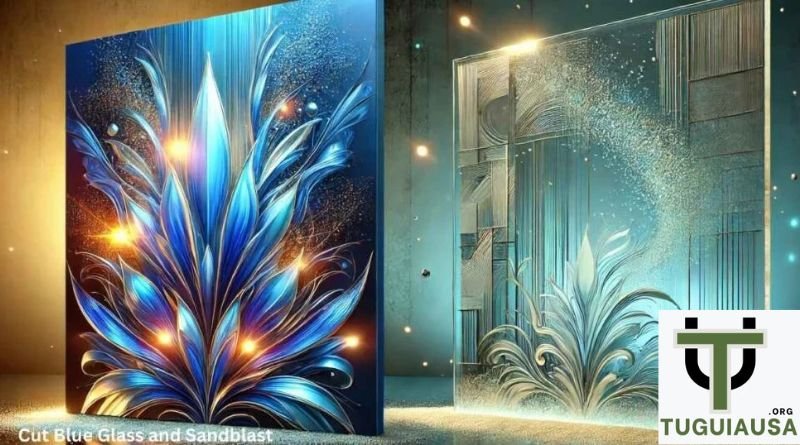Cut blue glass and sandblasting are two crucial techniques in the world of glass art and design, each with its own unique qualities and applications. These methods not only add aesthetic value but also enhance the functionality of the glass, making it a versatile medium for a wide range of uses. In this article, we will explore the essential techniques involved in cutting blue glass and sandblasting, followed by some creative applications that highlight the beauty and flexibility of these processes. Whether you are an artist, a designer, or simply someone interested in learning more about these techniques, this guide will provide you with valuable insights.
Understanding Cut Blue Glass: The Basics
Cut blue glass refers to the process of shaping and cutting blue-colored glass into desired forms. This technique is often used in various industries, including home decor, art, and architecture. Blue glass, which can range from a soft sky blue to a deep cobalt hue, offers a rich and vibrant look. The process of cutting this glass is both an art and a science, requiring specialized tools and techniques to achieve precise and intricate designs.
The first step in working with cut blue glass involves selecting the right type of glass. Different grades of blue glass are available, and the choice of material will depend on the intended use and the desired aesthetic effect. Once the appropriate glass is selected, artists use specialized glass cutters and tools, such as diamond-tipped blades or score cutters, to make precise cuts.
After scoring the glass, a controlled breakage is initiated along the scored lines, resulting in clean, sharp edges. Skilled artisans can create intricate designs and shapes by manipulating the cutting process. The edges of cut blue glass can be polished for a smooth finish or left rough for a more textured appearance, depending on the design’s requirements.
Sandblasting: Adding Texture and Depth to Glass
Sandblasting is a technique used to create textures, patterns, and designs on the surface of glass. This process involves using high-pressure air to propel sand or other abrasive materials against the glass surface, creating a frosted or etched effect. Sandblasting is often used in conjunction with glass cutting to add an extra layer of dimension to the design, enhancing its visual appeal.
The sandblasting process begins by applying a stencil or masking material to the glass surface, protecting the areas that should remain untouched. The unmasked areas are then blasted with abrasive sand or a similar material, which abrades the surface and creates a frosted or etched pattern. The intensity and duration of the sandblasting determine the depth and texture of the final result. By varying the blasting technique, artists can create soft, subtle textures or deep, highly detailed patterns.
This technique is particularly effective when working with blue glass, as the frosted effect contrasts beautifully with the vibrant color, creating a striking visual impact. The texture can range from a soft, misty appearance to a more pronounced, bold effect, giving the glass a unique, artistic character.
The Importance of Combining Cut Blue Glass and Sandblasting
When combined, cut blue glass and sandblasting offer endless creative possibilities. The sharp, clean lines of the cut blue glass can be contrasted with the textured surfaces created by sandblasting, resulting in dynamic and visually striking designs. The combination of these techniques is particularly popular in the creation of decorative items, such as vases, mirrors, glass panels, and lighting fixtures.
One of the most notable advantages of combining these two techniques is the ability to create multi-dimensional designs. For example, a blue glass vase may feature both smooth, polished edges and sandblasted patterns that cover the body of the vase. This combination of finishes creates an interesting contrast and adds depth to the piece, making it more visually appealing and unique.
Another benefit is the ability to experiment with patterns and textures. Artists can use sandblasting to create intricate designs on the glass, such as geometric shapes, floral patterns, or abstract motifs, while the cutting process allows for the creation of more structural forms. Together, these techniques enable the creation of both functional and decorative pieces that are both beautiful and versatile.
Creative Applications of Cut Blue Glass and Sandblasting
The applications of cut blue glass and sandblasting are vast, and these techniques are used in a wide range of industries and artistic fields. Below are some of the most creative and practical ways in which these techniques are applied:
Decorative Glassware and Art Pieces
One of the most common applications of cut blue glass and sandblasting is in the creation of decorative glassware and art pieces. Artists can create stunning vases, bowls, and sculptures by cutting blue glass into intricate shapes and then applying sandblasted patterns to the surfaces. The result is a beautiful piece of art that combines both smooth and textured finishes, creating a dynamic and interesting visual effect.
These decorative pieces often feature abstract patterns, nature-inspired motifs, or even custom designs for specific events or clients. The color of the blue glass adds to the beauty, as it can range from a pale, transparent blue to a deep, rich cobalt hue.
Glass Panels and Wall Art
Cut blue glass and sandblasting are also popular in the creation of glass panels and wall art. These glass panels can be used as room dividers, windows, or decorative elements in interior design. Sandblasting allows for the creation of unique patterns or images on the surface of the glass, while the cutting process ensures that the glass fits perfectly within the frame or opening.
Artists and designers often use blue glass to create vibrant, eye-catching panels that serve as focal points in a room. These pieces can be used in a variety of architectural applications, including in doors, partitions, and even shower enclosures. The combination of cutting and sandblasting enhances the visual depth and texture of the glass, making it an attractive and functional design element.
Lighting Fixtures and Lamps
Another popular use of cut blue glass and sandblasting is in the creation of lighting fixtures and lamps. The vibrant blue color of the glass, when combined with the textured effects of sandblasting, can create striking light patterns that add ambiance and character to any space. These lighting pieces can range from chandeliers to table lamps, and each piece is unique in its design and the way light interacts with the glass surface.
When sandblasting is applied to blue glass lighting fixtures, the etched patterns scatter light in interesting ways, creating shadows and highlights that add an extra layer of intrigue. The cut shapes of the glass also play a role in how the light is refracted, further enhancing the beauty of the fixture.
Architectural Elements
Cut blue glass and sandblasting are widely used in architectural applications, where glass is incorporated into building designs to create striking visual effects. For example, glass panels with sandblasted patterns can be used in facades, windows, and skylights, adding an artistic touch to the building’s exterior.
These techniques are also employed in interior architectural elements, such as partition walls, glass staircases, and balustrades. The combination of blue glass and textured sandblasted designs creates an elegant and modern look, elevating the overall aesthetic of the space.
Conclusion
Cut blue glass and sandblasting are powerful techniques that allow for a wide range of creative possibilities. Whether you are working on a decorative piece, architectural element, or functional object, the combination of cutting and sandblasting can result in stunning designs that are both visually appealing and functional. By mastering these techniques, artists and designers can unlock the full potential of blue glass, transforming it into unique and beautiful works of art that captivate the eye and inspire creativity.
With endless applications across various industries, the possibilities for cut blue glass and sandblasting are only limited by imagination. From decorative glassware to architectural elements, these techniques continue to shape the world of glass art, offering an exciting avenue for artistic expression and innovation.
May Also Read: tuguiausa







